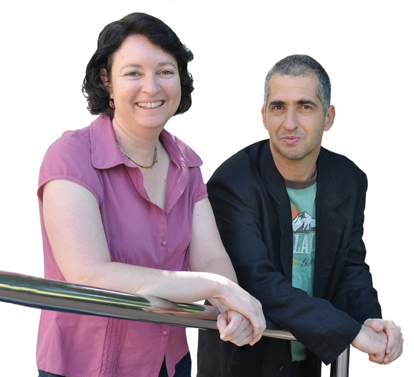How does human activity drive climate change?

In a previous study, Dr. Koren traveled to one of the largest "laboratories" in the world where the effect of soot particles on cloud production is tested: the Amazon basin, where millions of dunams of forest are burned in the dry season, every year. Using data collected by NASA research satellites, Dr. Koren and his research partners discovered a kind of "boomerang effect": when aerosol levels were low, a small increase in their amount caused the cloud cover to expand. When the aerosol levels reached a certain threshold value, their cooling activity changed, from seeding the clouds, in favor of a warming effect, absorbing energy - and thus the trend was reversed.
In the current study, done in collaboration with Prof. Colin Price from Tel Aviv University and Prof. Yoav Yair from the Open University, the scientists investigated the relationship between aerosols and clouds from a different angle: in addition to the aerial measurements of clouds in the Amazon, they collected data from a network of sensors placed on the ground, with the aim of identifying the The sources of lightning. They knew that the thicker the cloud, the more intense electrical activity might occur in it - or, in other words, lightning might form. Therefore, they believed that if the soot does increase the volume of the clouds, there will be an increase in the amount of lightning, and if the soot particles suppress the formation of the clouds, less lightning will occur.
Indeed, in the analysis of lightning patterns, a "boomerang effect" similar to that discovered by Dr. Koren in the previous study was discovered: a small increase in the level of aerosols led to an increase in the amount of lightning. However, later on, a further increase in the level of aerosols did not affect the amount of lightning, and then the number of lightning even decreased with the continued increase in soot levels. "We were able to identify the transition point, where the effect of the aerosols changes," says Dr. Koren, "something that supports our model for the interrelationship between the aerosols and the degree of cloud cover." Dr. Koren believes that this research may settle the controversy regarding the effect of soot on the clouds, especially regarding the clouds that lead to the formation of lightning and thunder. This understanding may also help improve scientists' ability to predict future climate change.

One response
In Israel clouds are sown with silver iodide, from ovens or from an airplane. Will it now turn out that the air pollution is enough and the sowing only reduces the formation of clouds, because we have passed the threshold of the boomerang effect? Will it turn out that the money friend is at all dangerous to health and the environment when it arrives in Israel?